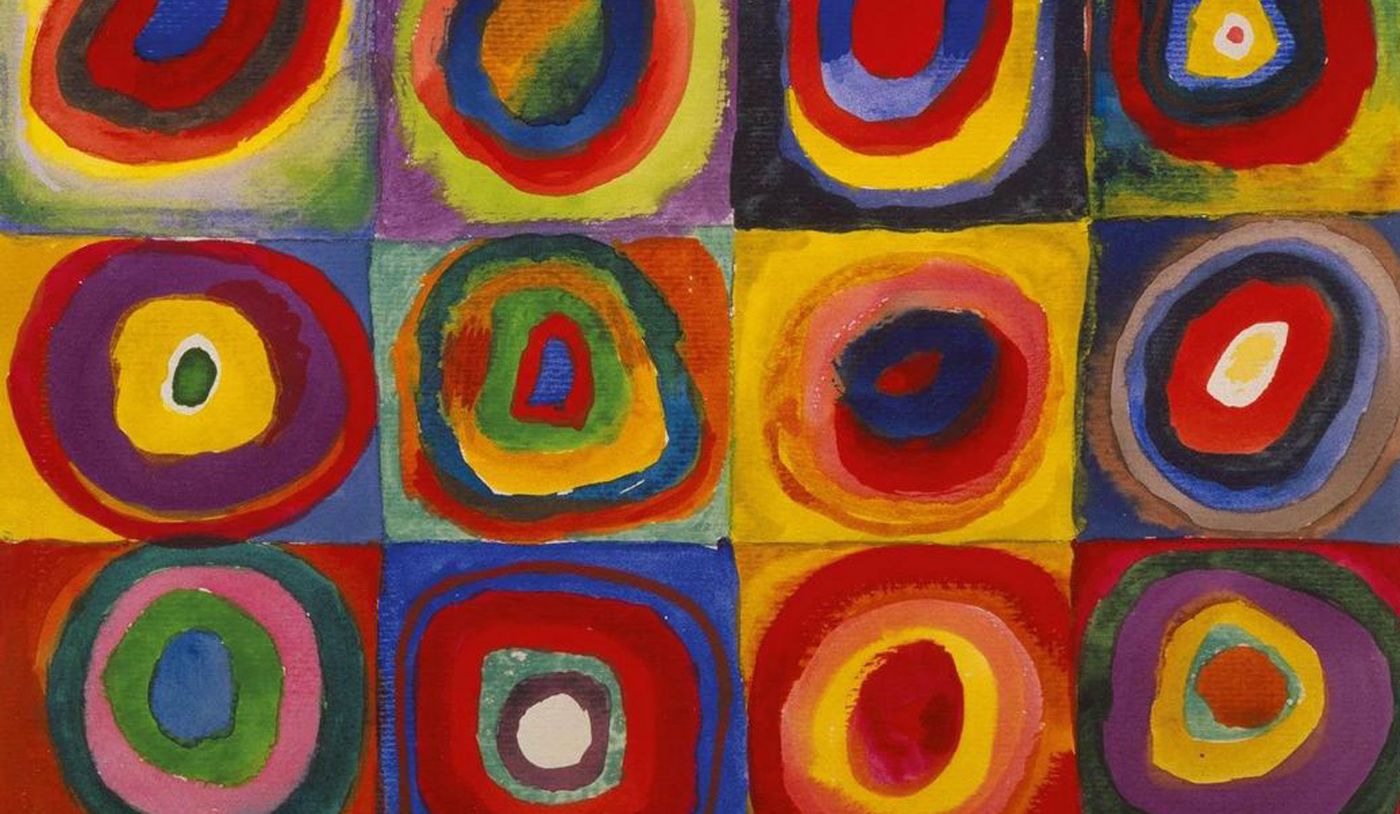Abstract art
Abstract art is art that does not attempt to represent an accurate depiction of a visual
reality but instead use shapes, colours, forms and gestural marks to achieve its effect.
Wassily Kandinsky.
Strictly speaking, the word abstract means to separate or withdraw something from
something else.
One name which comes to mind when we speak of the birth of abstract art is,
inevitably, Wassily Kandinsky. In 1935, the Russian artist wrote to his gallerist in New York
to make a claim that was no small thing: to have created the first abstract painting in the
history of art, a work made in 1911. This vocabulary is made up of six basic elements: Line,
Texture, Shape, Form, Color, and Value. Whether you do abstract art, non-objective, or
even realistic, you'll find at least one, if not more, of these elements at work.
Abstract art, also called nonobjective
art or nonrepresentational art, painting, sculpture, or graphic
art in which the portrayal of things from the visible world plays little
or no part. All art consists largely of elements that can be called
abstract—elements of form, colour, line, tone, and texture. Prior to
the 20th century these abstract elements were employed by artists
to describe, illustrate, or reproduce the world of nature and of
human civilization—and exposition dominated over expressive
function.
There is, however, a deep distinction between abstracting from
appearances, even if to the point of unrecognizability, and making
works of art out of forms not drawn from the visible world. During
the four or five years preceding World War I, such artists as Robert
Delaunay, Wassily Kandinsky, Kazimir Malevich, and Vladimir
Tatlin turned to fundamentally abstract art. (Kandinsky was
traditionally regarded as having been the first modern artist to paint
purely abstract pictures containing no recognizable objects, in
1910–11. That narrative, however, was later questioned, especially
in the 21st century with the renewed interest in Swedish
artist Hilma af Klint. She painted her first abstract work in 1906 but
with a different goal than achieving pure abstraction.) The majority
of even the progressive artists regarded the abandonment of every
degree of representation with disfavour, however. During World
War I the emergence of the de Stijl group in the Netherlands and of
the Dada group in Zürich further widened the spectrum of abstract
art.
Art can be explained adequately in words, because its influence on
people is so personal and speaks to the nonverbal parts of our
existence. Therefore, art is an experience. You must let go of your need
to put things into words, and let the artwork take you somewhere... even
lift you into higher spheres.
Modern abstract art speaks to the contemporary spirit. The shapes and forms of abstract
art vary from artist to artist, who each share their unique inner vision. ... If you want to paint
abstract art and you've never done it before, it helps to identify the style that you'd like to
create.
Abstract art is art that does not attempt to represent an accurate
depiction of a visual reality but instead use shapes, colours, forms
and gestural marks to achieve its effect
The first signs. Abstraction can be traced to Impressionism, Post-Impressionism and Cubism. All
three helped realize the idea that art could be non-representative.
The movement. Modern abstract art was born early in the 20th century. It was completely radical for
its day. Artists began to create simplified objections with little or no reference to the “real” world.
The father. The first artist to create abstract art as we know it will always remain a mystery but
Wassily Kandinsky is often credited by historians as he created paintings of floating,
norepresentational forms as early as 1912. His work brought abstraction to America during the
Armory Show in 1913.
The present. Abstract art now lives in the art world in many forms. It is two- and three-dimensional.
It can be vast or small. Abstract art can also be made with many materials and on many surfaces. It
can be used in concert with representational art or completely abstract. Artists creating it often
focus on other visual qualities like color, form, texture, scale and more in their nonobjective work.
“Abstraction allows man to see with his mind what he cannot see
physically with his eyes.” ―Arshile Gorky
By Swarali Totade



hi! I loved this post
ReplyDeleteNice information
ReplyDeleteNice👍
ReplyDeleteNice post with simple explanation
ReplyDeleteVery nice post
ReplyDelete